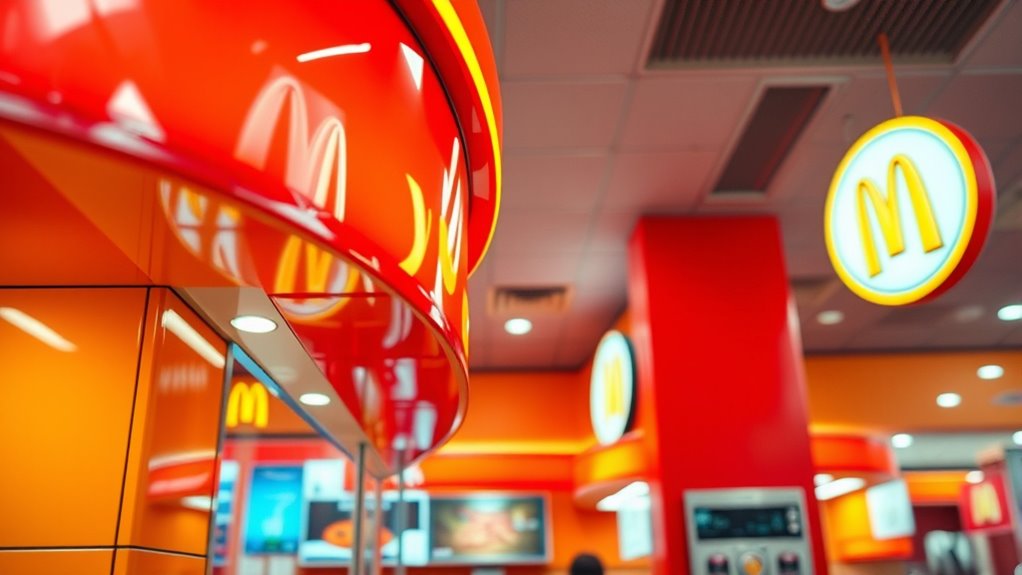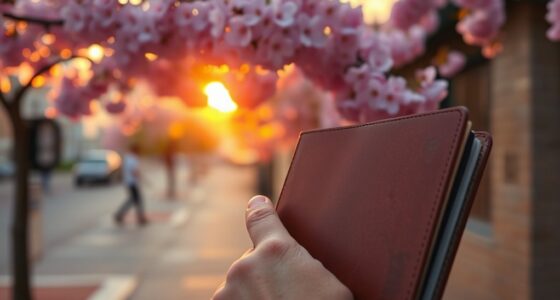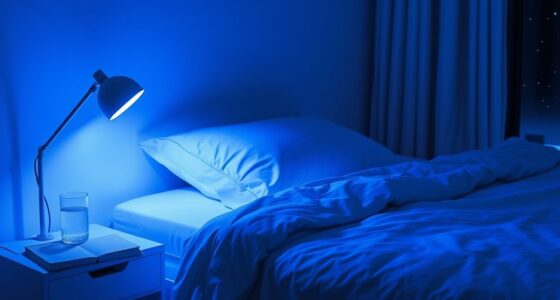Fast food chains use red, yellow, and orange because these colors trigger quick decisions, stimulate your appetite, and create feelings of warmth and excitement. Red grabs your attention and makes you hungry, while yellow makes you feel welcome and boosts your mood. Orange combines both energies, encouraging you to act fast and feel energized. If you want to discover how these colors subtly influence your choices, keep exploring how your brain reacts to their clever tricks.
Key Takeaways
- Red stimulates hunger, creates urgency, and encourages impulsive fast decisions, boosting sales and brand recognition.
- Yellow evokes friendliness and speed, making customers feel welcomed and prompting quick choices.
- Orange combines warmth and excitement, stimulating appetite and conveying playfulness to attract attention.
- These colors leverage psychological cues to enhance emotional responses and reinforce brand loyalty.
- Using these colors tricks the brain into associating fast food with quick, satisfying, and pleasurable experiences.
The Power of Red: Stimulating Appetite and Urgency
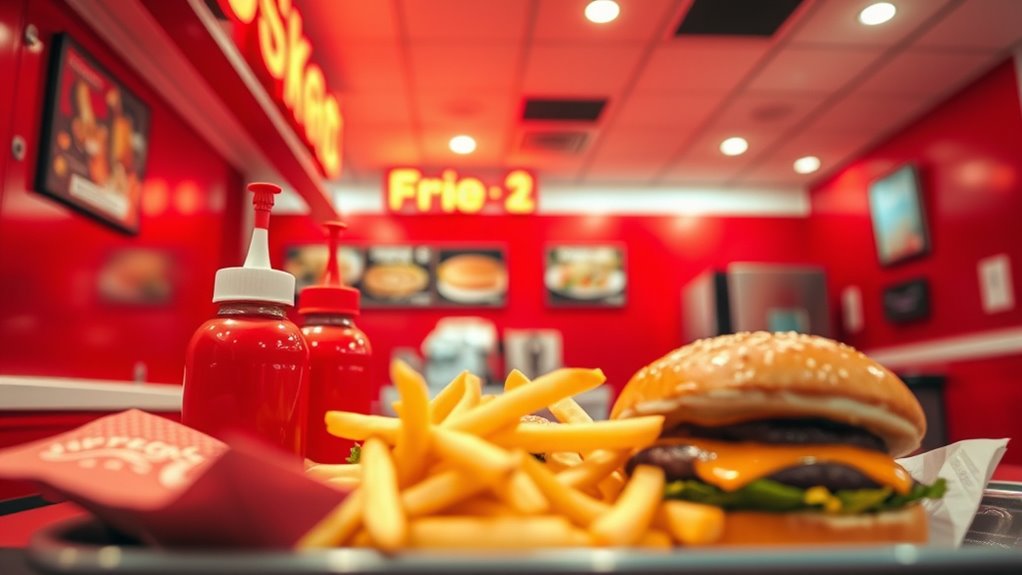
Red is a dominant color in the fast food industry because it actively stimulates your appetite and creates a sense of urgency. This is rooted in color psychology, which shows that red can increase your heart rate and trigger hunger signals. Fast food brands leverage this effect to influence consumer perception, making you feel hungry and keen to make quick decisions. The boldness of red grabs your attention instantly, encouraging impulsive choices and speeding up your buying process. When you see red in branding or signage, your brain perceives it as a call to action, motivating you to order faster or visit sooner. This strategic use of color helps fast food chains stay top of mind and encourages repeat patronage, tapping into subconscious cues that drive your behavior. Additionally, the psychological impact of color can enhance brand recognition and emotional response, further reinforcing consumer loyalty.
The Brightness of Yellow: Creating Friendliness and Speed
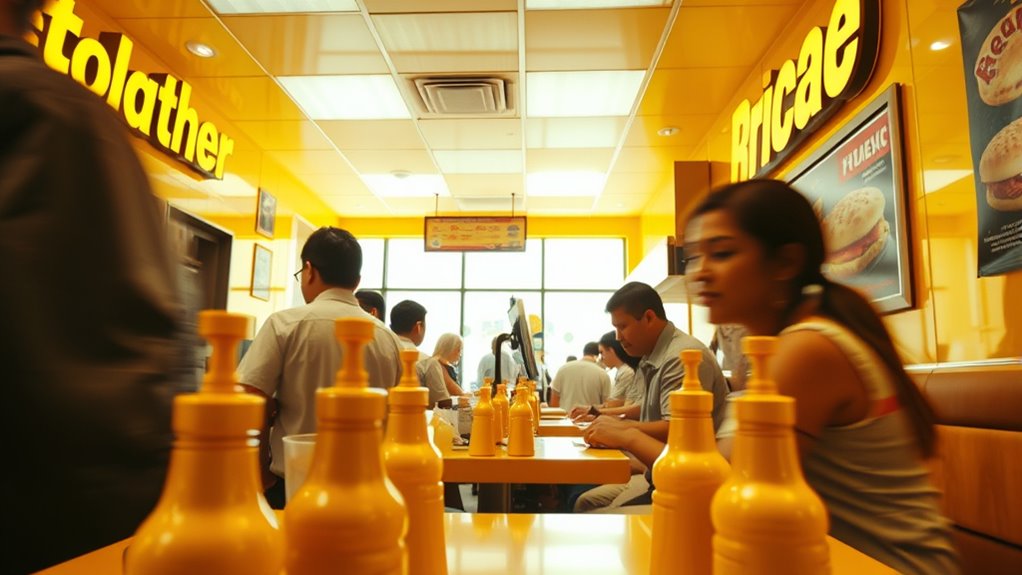
The bright, cheerful hue of yellow plays a key role in shaping how fast food brands communicate friendliness and speed. Through color psychology, yellow evokes warmth, optimism, and approachability, making customers feel comfortable and welcomed. It’s a strategic choice in branding strategies aimed at creating a positive first impression. When you see yellow in logos or signage, it signals quick service and a fun atmosphere. This color’s brightness grabs attention effortlessly, prompting you to act fast. Yellow also stimulates mental activity and boosts mood, encouraging a sense of urgency without pressure. Additionally, the association between brightness and recognition can reinforce brand identity and foster loyalty.
The Energy of Orange: Combining Warmth and Excitement
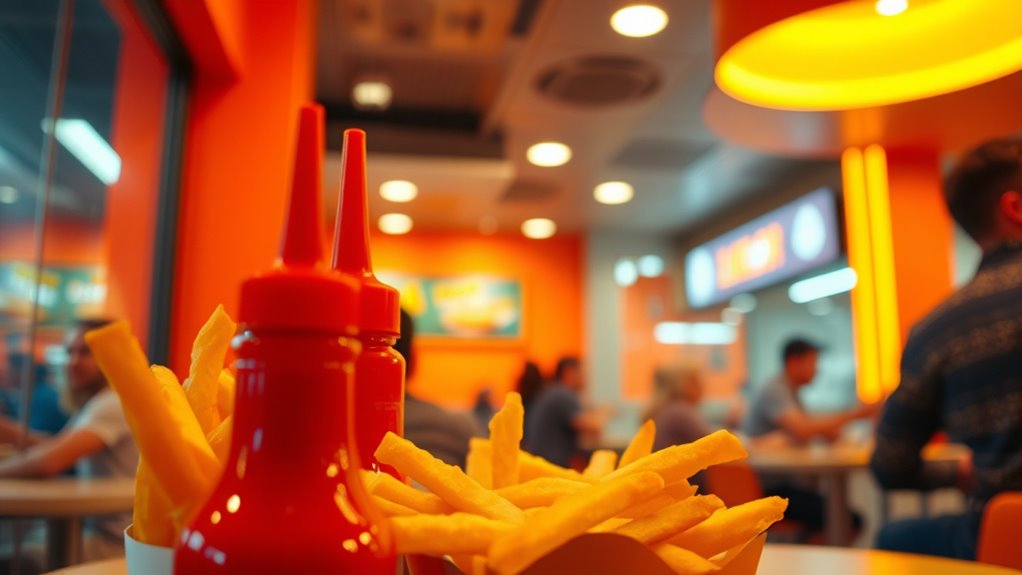
Orange’s vibrant energy combines warmth and excitement, making it a powerful color for fast food branding. In color psychology, orange stimulates appetite and enthusiasm, helping you associate the brand with fun and friendliness. It’s a color that grabs attention while conveying a sense of urgency and playfulness, enhancing brand recognition. Envision this:
| Warmth | Excitement |
|---|---|
| Cozy fireside | Carnival rides |
| Sunset hues | Sports jerseys |
| Autumn leaves | Adventure gear |
| Carrots | Energy drinks |
| Warm candles | Exciting events |
This duality makes orange irresistible, encouraging quick decisions and fostering a welcoming atmosphere. Fast food chains leverage this energy to evoke positive emotions, making their brand memorable and inviting. Incorporating vintage decor elements helps reinforce the nostalgic and rustic feel associated with farmhouse aesthetics.
Frequently Asked Questions
Do Color Choices Affect Customer Spending Habits?
Color choices definitely influence your spending habits. Through emotional responses and color psychology, certain colors can make you feel hungry, excited, or relaxed, prompting you to spend more. Fast food chains use bright reds and yellows to stimulate appetite and create urgency. You might not realize it, but these colors subtly guide your behavior and purchasing decisions, making you more likely to choose their products over others.
Are There Cultural Differences in Color Perception?
You might notice that color perceptions vary across cultures due to cultural symbolism and regional preferences. For instance, red symbolizes luck in China but might evoke urgency elsewhere. These differences influence how you respond to branding, marketing, or environments. Brands adapt their color choices to match local cultural meanings, ensuring they resonate with regional preferences and effectively communicate their message. Understanding this helps you see how global companies tailor their visuals to diverse audiences.
How Quickly Do Color Effects Influence Eating Behavior?
When you see bright colors like red and yellow, your visual response triggers subconscious cues that can influence your eating behavior almost instantly. These colors are designed to evoke appetite and excitement, often leading you to eat more quickly or feel hungrier sooner. The effects happen rapidly—within seconds—because your brain responds to these subconscious triggers without you even realizing it, guiding your cravings and eating habits effortlessly.
Can Color Branding Impact Brand Loyalty?
Color consistency creates a compelling connection, cultivating customer commitment and confidence. When your brand consistently uses specific hues, it fosters emotional branding that resonates deeply, building lasting loyalty. Bright, bold colors become familiar fixtures, forging bonds that boost brand loyalty. You’ll notice that cohesive color schemes convey credibility and care, convincing customers to choose your brand repeatedly. Essentially, strategic color choices steer your audience’s emotions, strengthening their loyalty and love for your brand.
Do Individual Preferences Override Color Psychology?
You might think personal preference overrides color psychology, but emotional response often plays a bigger role. While your favorite colors can influence your choices, your emotional reactions to specific hues tend to shape your overall experience more. Colors evoke feelings that can override individual preferences, guiding your perceptions and decisions subconsciously. So, even if you prefer certain colors, the emotional impact of a color can still sway your behavior more than personal preference alone.
Conclusion
Now you see how fast food chains cleverly use red, yellow, and orange to grab your attention and influence your cravings. These colors aren’t just for looks—they play with your mind to make you hungry, feel welcome, and excited. Remember, “The eyes are the gateway to the soul,” and in this case, they’re also guiding your choices. By understanding their tricks, you can make more mindful decisions next time you see those bright signs.
